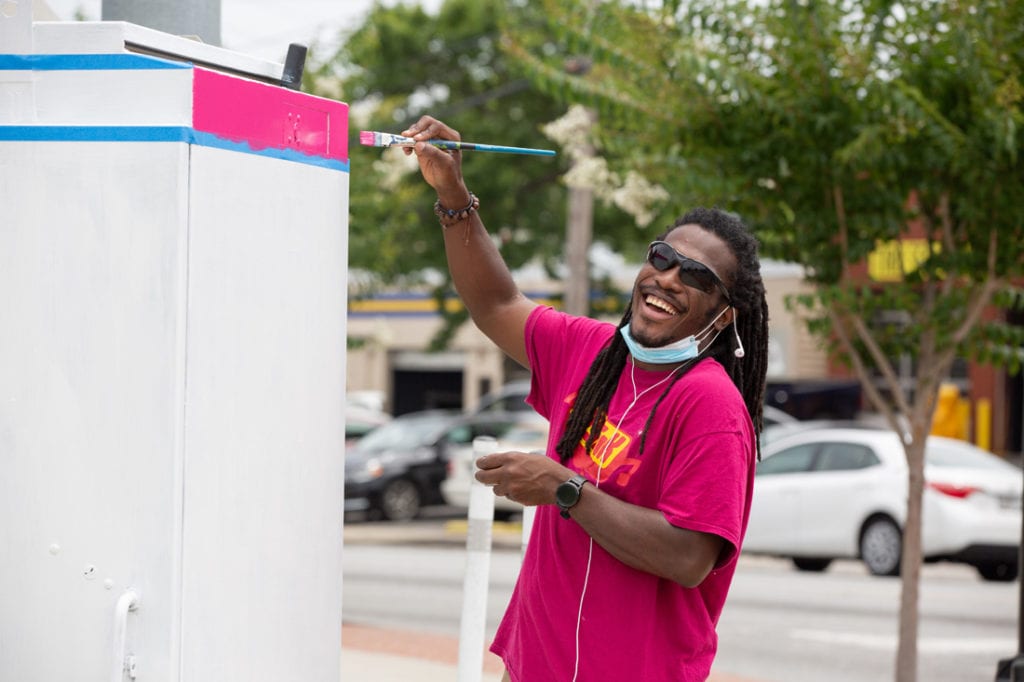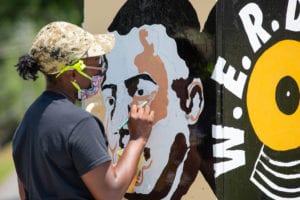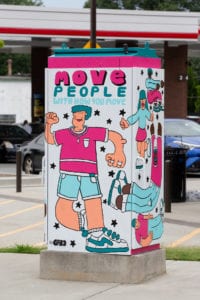ARTISTS CHANGE THE UNSIGHTLY INTO INSPIRING ON THE UPPER WESTSIDE.

For the Upper Westside Improvement District, a pandemic, it turns out, was a good time to think about outdoor art. After months of hunkering down in their homes, residents of the area who head out into the spring weather are now being greeted by a collection of artistic creations designed to brighten some of the neighborhood’s dullest corners.

The District, which covers Channing Valley, Underwood Hills, Berkeley Park, Howell Station, Blandtown and the Marietta Street artery, took on the project to spruce up those dull, gray metal power boxes that dot the landscape.
Thanks to the efforts of five commissioned artists, the once graffiti- and poster-plastered canvases have morphed into eye-catching depictions of faces, landscapes, the city skyline and local history.
The finished works include George Baker’s Move People with the Way You Move, Elizabeth Lang’s Between the Evergreens and Erica Chisolm’s depiction of WERD Radio, the country’s first black-owned radio station.

“Our first goal was to work on boxes next to neighborhoods and walking areas where the artwork would bolster the neighborhood,” says Adeline Collot, the Upper Westside Improvement District’s planning and capital projects program director. “And it was a great way to reclaim the boxes from all the junk on them.”
The effort is part of the community’s commitment to public art that’s been incorporated into the master planning process now underway. But rather than waiting for that plan to be finalized, Collot says getting the signal boxes spruced up was “a quick win.”
After working with the city to get approval, the call went out for local artists to design concepts. More than 45 submitted ideas to a selection committee made up of representatives from the Mayor’s Office of Cultural Affairs, the community improvement district (business owners) and residents. When the final selections were completed and approvals in place, the work got underway last summer. The five artists received $500 stipends, and Collot’s office paid for the materials.

“We also had the boxes sealed with a clear coat and then an antigraffiti coat,” she says. “We hope those things will help keep the art fresh for three to five years.”
Collot hopes to continue highlighting the history of the community in the next round that will reclaim six power boxes. “Public art is something people really rally around,” she says. “We hope the effort will be something we continue throughout 2021.”
Atlanta-based writer and editor contributing to a number of local and state-wide publications. Instructor in Georgia State’s Communication department and Emory’s Continuing Education division.












